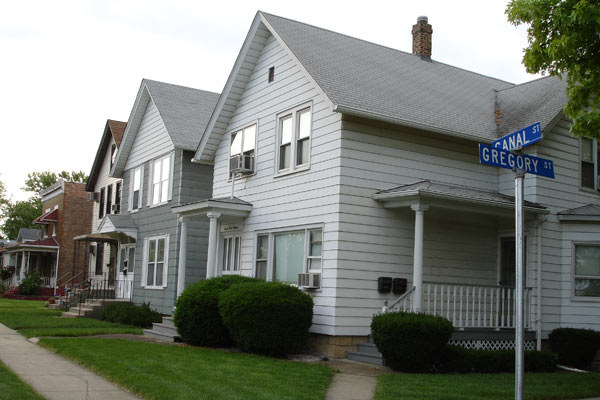
Houses in Blue Island, one of the south suburban communities receiving real-estate help through the CVS program.
In a cluster of south suburbs hard hit by the foreclosure crisis, a coalition of towns is working to clean up and stabilize their devastated neighborhoods. Now the CVS pharmacy chain is lending some vital support to that effort by trying to create a pool of potential buyers for homes reclaimed by banks.
In late April, CVS announced that it would bring its employer-assisted housing program to the south suburbs; the program funds some forgivable down payment assistance and credit counseling for CVS employees who want to buy homes. CVS launched a pilot program in Washington, D.C., five years ago and later expanded to southern California. It has enrolled 100 employees in the program—most of them first-time homebuyers—and, according to Stephen Wing, the company’s director of workforce initiatives, none of them have yet fallen into foreclosure.
CVS’s program in south Cook County will point stable homebuyers toward the foreclosed homes that towns in the South Cook County Housing Collaborative have targeted as part of their neighborhood stabilization efforts. By creating a small pool of demand for the homes, it can answer “the natural question these municipalities have: if you build it, will they come?” says Robin Snyderman, vice president of community development at the Metropolitan Planning Council (MPC). The organization is spearheading the Charter One Workforce Housing Initiative, which encourages employers to help their workers buy homes. MPC reports that more than 70 Chicago-area businesses have some kind of employer-assisted housing program.
The CVS program is typical of those local plans in that the pharmacy company partners with housing agencies and credit counseling programs to help its employees; the company doesn’t sell the homes, hold the mortgages, or provide the credit counseling. “We’re in the business of running stores,” Wing says. “We link up with the people who are in the business of helping people get into homeownership.” Eligible workers include pharmacy associates and technicians, pharmacists, and store managers. Wing says that the primary goal of the program is to get employees into affordable homes near their workplace. “If you can give them a chance to buy a house where they can walk to work or get there fairly quickly, they’re happier and more dedicated workers,” he says.
The new spin that CVS will add in south Cook County is that it will also offer incentives for its people to buy in the designated neighborhood stabilization areas. “Our program can fit so well with the strategy those towns have for stabilization,” Wing says. Snyderman believes this is the first such tailored effort in the Chicago area, and may be a nationwide first as well.
CVS’s launch in the south suburbs is especially valuable. While that area took the worst foreclosure hit in Illinois, it has received only $9 million in federal recovery funds. “You can spread out $9 million and not even notice anything was spent,” Snyderman says. The coalition of local municipal leaders hopes to use the funds to make a concentrated impact, focusing on recovery in specific neighborhoods that can form a nucleus of stability. The 11 towns that are sharing the $9 million include Dolton, Robbins, Lynwood, Lansing, Blue Island, and others, but the regional collaborative includes 15 additional towns.
Wing notes that CVS’s employer-assisted housing program does benefit the company. “It’s a retention tool for us,” he says. “But if in a small way it helps these towns eliminate their foreclosure problems, we’re all for that.”
photo by Josh Hawkins for the Metropolitan Planning Council


